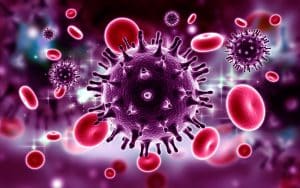Podcast: Play in new window | Download (Duration: 9:00 — 21.0MB)
Subscribe: Apple Podcasts | TuneIn | RSS | More

Despite more than three decades’ worth of research, HIV continues to be a major health threat in the U.S. and around the world. Although effective therapies exist that can give HIV-patients a relatively normal lifespan, the life-long treatment poses an enormous financial burden.
That’s why scientists who study the problem of infectious diseases continue to focus on the virus that causes AIDS.
Smita Kulkarni, Ph.D., was recently awarded a $525,000 grant from the National Institutes of Health to conduct research on the interaction between what are called long non-coding RNAs and HIV, a new area of investigation.
Dr. Kulkarni specializes in host-pathogen interactions, specifically involving HIV.
“We have worked on HIV and the impact of host factors on HIV for so long,” Dr. Kulkarni said, “but in reality we’ve looked at only 3% of the genome.”
Scientists have focused exclusively on protein-coding genes. The rest of the human genome — 97% — does not code for proteins.
The protein coding genes make RNA messenger molecules that take the coded information from nucleus to cytoplasm where it is translated into proteins. The non-coding RNAs carry out diverse regulatory work in the cells rather than just ferry information.

“What we found in our preliminary observations is that one of these long non-coding RNAs can inhibit HIV replication,” Dr. Kulkarni explained.
Although this research is in the very early stages, Dr. Kulkarni and her team will try to pinpoint molecular mechanisms which explain how this RNA stops the virus from making copies of itself. Using this novel information, scientists will attempt to come up with a way to use this information against HIV, perhaps opening up a new field for intervention.
Dr. Kulkarni also believes these long-coding RNAs have potential for recruitment in therapies against other infectious pathogens that live inside cells.